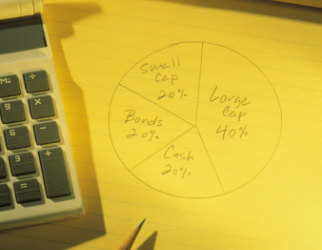Why bonds are always a good idea
Stocks will always offer greater returns than bonds, but a portfolio made up 100% equities is fraught with more risk than most could possibly bear.
Advertisement
Stocks will always offer greater returns than bonds, but a portfolio made up 100% equities is fraught with more risk than most could possibly bear.
 Looking at your investment portfolio and feeling pretty discouraged about bonds these days? It’s understandable. Bond funds are poised to lose money this year for the first time since 1999, as spiking interest rates have driven down their prices.
However, if you’re questioning whether you should dump bonds in favour of more stocks, think again. Sure, stocks will always offer greater returns than bonds, but a portfolio made up 100% equities is fraught with more risk than most investors could possibly bear. Even a properly constructed portfolio with a well-diversified mix of equities will see its fair share of ups and downs during your investing lifetime. To safeguard you from that type of volatility, bonds act as stabilizers.
In 2008 and 2009, it was bonds that saved a lot of people’s portfolios and stopped them from impulsively and erroneously selling of all their equities. When global stock markets fell by half, government bonds rose sharply to offset those losses. We’re now seeing the inverse of this: stocks are up and bonds are down.
This is why it’s so important for long-term investors to always focus on their portfolio as a whole, rather than get distracted by current market conditions. In short, if you stick with your target asset allocation and rebalance annually, you’ll always be fine.
Generally speaking, the percentage of bonds in your portfolio should match your age. So if you’re 40, your asset allocation would 40% bonds and 60% securities. By the time you reached 60, it would reverse to 60% and 40%. The idea here is that younger people with longer investment horizons can take on more risk and ride out inevitable market volatility. But investors approaching retirement need to protect their assets by being more heavily weighted in stable fixed income investments.
Your own precise mix of stocks and bonds, of course, can be adjusted to suit your own preferences or goals. But regardless of how much stock volatility you’re willing to take on in your portfolio, you should never have more than 75% in stocks and less than 25% in bonds.
Rare catastrophic equity market crashes aside, it’s highly doubtful that even the most steely investor would have the stomach to stick with a portfolio made up of 100% equities. When the first market dip came along, that investor would likely panic and sell at a tremendous loss.
This is why bonds are always a good idea. They give you the flexibility to buy more stocks when equity prices are down.
Looking at your investment portfolio and feeling pretty discouraged about bonds these days? It’s understandable. Bond funds are poised to lose money this year for the first time since 1999, as spiking interest rates have driven down their prices.
However, if you’re questioning whether you should dump bonds in favour of more stocks, think again. Sure, stocks will always offer greater returns than bonds, but a portfolio made up 100% equities is fraught with more risk than most investors could possibly bear. Even a properly constructed portfolio with a well-diversified mix of equities will see its fair share of ups and downs during your investing lifetime. To safeguard you from that type of volatility, bonds act as stabilizers.
In 2008 and 2009, it was bonds that saved a lot of people’s portfolios and stopped them from impulsively and erroneously selling of all their equities. When global stock markets fell by half, government bonds rose sharply to offset those losses. We’re now seeing the inverse of this: stocks are up and bonds are down.
This is why it’s so important for long-term investors to always focus on their portfolio as a whole, rather than get distracted by current market conditions. In short, if you stick with your target asset allocation and rebalance annually, you’ll always be fine.
Generally speaking, the percentage of bonds in your portfolio should match your age. So if you’re 40, your asset allocation would 40% bonds and 60% securities. By the time you reached 60, it would reverse to 60% and 40%. The idea here is that younger people with longer investment horizons can take on more risk and ride out inevitable market volatility. But investors approaching retirement need to protect their assets by being more heavily weighted in stable fixed income investments.
Your own precise mix of stocks and bonds, of course, can be adjusted to suit your own preferences or goals. But regardless of how much stock volatility you’re willing to take on in your portfolio, you should never have more than 75% in stocks and less than 25% in bonds.
Rare catastrophic equity market crashes aside, it’s highly doubtful that even the most steely investor would have the stomach to stick with a portfolio made up of 100% equities. When the first market dip came along, that investor would likely panic and sell at a tremendous loss.
This is why bonds are always a good idea. They give you the flexibility to buy more stocks when equity prices are down.
Share this article Share on Facebook Share on Twitter Share on Linkedin Share on Reddit Share on Email